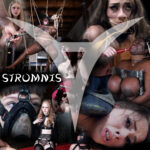This article originally appeared at DomSubFriends.com
The key difference between S&M and Abuse, is “consent”.
* Consent = Is an agreed approval of what is done and/or proposed by another.
* Abuse = to use so as to injure or damage: MALTREAT
Safe, sane and consensual play is the standard of the organized SM community; it relies on the use of a “safeword” that allows the bottom to stop the action at any time. Without informed consent, it is not SM, it is abuse.
SM always requires free, informed consent of all parties involved. A propensity to violence is therefore a fallacy, since the only time we engage in SM behavior is with our partners.
SM partners take great care to make sure that their activities are as safe as possible. SM does not feel like it looks.
SM partners do not have to apologize to each other. Instead, they are happy and satisfied. Unlike abuse or violence, where one party has not given informed consent to the activity. Children cannot give informed consent, therefore are never a part of SM activity.
SM happens in the context of an erotic relationship. Just as context helps differentiate between an organized boxing match and a street brawl.
Technical reference material and participation in organized groups provide the tell-tale signs for differences between SM and violence or abuse.
Tell tale signs of the differences between Abuse and Consensual BDSM:
a) Signs of significant preparation. e.g.. Adult toys, music, bondage furniture, lubricants and safety supplies.
b) Restraints. Abusers tend to restrain their victims with fear and intimidation, not safety clips and quick releases.
c) The availability of mentors, reference materials and technical guides.
A Quick Guide To Know the difference:
S&M
* Is based on the safe, sane, consensual theory
* S&M is a controlled environment
* S&M has safe words to stop the scene
* In a S&M scene the dominant looks out for the well being of the submissive
* S&M can be an erotic sexual encounter
* In S&M both partners are enjoying themselves
* in S&M the dominant respects limits
* In S&M there is mutual respect
* In S&M the relationship is fulfilling
* In S&M both parties feel they contribute towards the relationships
* In S&M one can ask their partner to “play”
* In S&M relationship there is trust
* In S&M a submissive voluntarily serves the dominant
* S&M is about building trust
* S&M builds self esteem
* S&M builds the spirit of a submissive
Abuse
* Abuse is not negotiated
* Abuse is an out of control environment
* Abuse does not have safe words
* An abuser does not give a damn about the victim
* Abuse is always one sided
* Abuse is never negotiated.
* In abuse, no one is enjoying the results
* The abuser is into non consensual violence
* The victim has no respect towards the abuser
* In abuse the victim is harmed
* In abuse both parties are left unfulfilled
* The abuser always feel they are superior
* A person does not ask for abuse
* In an abusive relationship there is no trust
* The abuser does not care for consent
* Abuse has no trust
* Abuse destroys self esteem
* An abuser destroys the spirit of the victim









